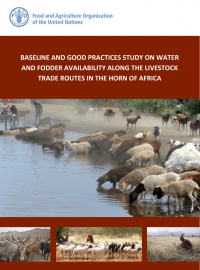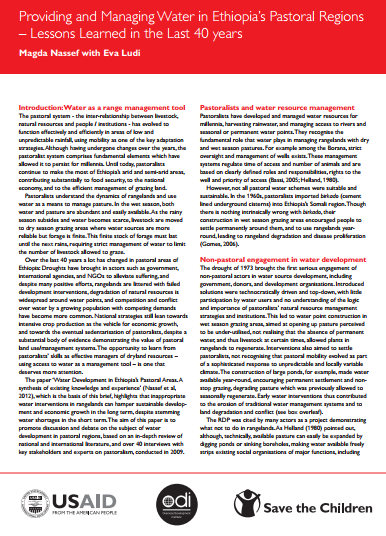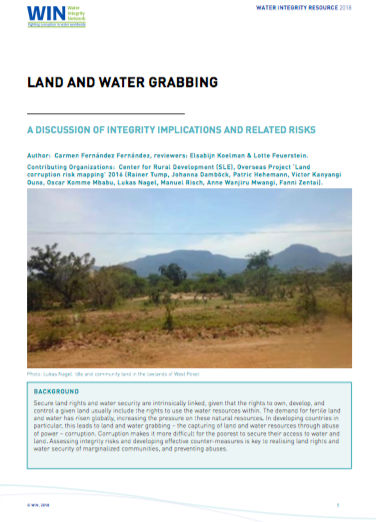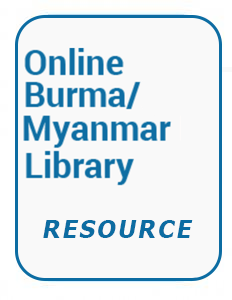TOPIC GUIDE: Governance of Natural Resources
This topic guide for government agencies, service providers and other practitioners examines various dimensions of governance that are key to deliver appropriate benefit-sharing, ensure sustainable exploitation, minimise conflict over access and control, and maximise the contribution of resources to economies. This includes decentralised and collaborative governance, multi-level and adaptive governance, and the roles of institutions and politics.
Providing and Managing Water in Ethiopia’s Pastoral Regions – Lessons Learned in the Last 40 years
Introduction: Water as a range management tool The pastoral system - the inter-relationship between livestock, natural resources and people / institutions - has evolved to function effectively and efficiently in areas of low and unpredictable rainfall, using mobility as one of the key adaptation strategies. Although having undergone changes over the years, the pastoralist system comprises fundamental elements which have allowed it to persist for millennia.
Irrigation, sécurité alimentaire et pauvreté – Leçons tirées de trois grands barrages en Afrique de l’Ouest
Date: Septembre 2017
Source: Foncier & Développement
Par: Frédéric Bazin, Ibrahima Hathie, Jamie Skinner, Jérôme Koundouno
Ce nouveau rapport GWI synthétise les résultats de quatre années de recherches sur trois barrages et périmètres rizicoles existants : Sélingué au Mali, Bagré au Burkina Faso et Anambé au Sénégal.
Land and Water Grabbing
IN’s latest resource is an introduction to the topic Land and Water Grabbing: A discussion of integrity implications and related risks, which discusses the integrity implications and risks of land and water grabbing. The essay examines the link between land and water grabbing, the people that are most impacted by this, and legal frameworks related to both land and water rights. Land and Water Grabbing describes the impacts of land and water grabbing in Kenya and Ethiopia.
Assessing Riparian Vegetation Condition and Function in Disturbed Sites of the Arid Northwestern Mexico
Transformation or modification of vegetation distribution and structure in arid riparian ecosystems can lead to the loss of ecological function. Mexico has 101,500,000 ha of arid lands, however there is a general lack of information regarding how arid riparian ecosystems are being modified.
Spatial Modeling of Soil Erosion Risk and Its Implication for Conservation Planning: the Case of the Gobele Watershed, East Hararghe Zone, Ethiopia
Soil erosion by water has accelerated over recent decades due to non-sustainable land use practices resulting in substantial land degradation processes. Spatially explicit information on soil erosion is critical for the development and implementation of appropriate Soil and Water Conservation (SWC) measures.The objectives of this study were to estimate the magnitude of soil loss rate, assess the change of erosion risk, and elucidate their implication for SWC planning in the Gobele Watershed, East Hararghe Zone, Ethiopia.
Groundwater Irrigation Management and the Existing Challenges from the Farmers’ Perspective in Central Iran
The sustainable management of natural resources, and particularly groundwater, presents a major challenge in arid regions to ensure security of water supply and support agricultural production. In many cases, the role of smallholder farmers is often neglected when managing irrigated water and land processes.
Rising river flows throughout the twenty-first century in two Himalayan glacierized watersheds
Greater Himalayan glaciers are retreating and losing mass at rates comparable to glaciers in other regions of the world Assessments of future changes and their associated hydrological impacts are scarce, oversimplify glacier dynamics or include a limited number of climate models.
Ice melt, sea level rise and superstorms: evidence from paleoclimate data, climate modeling, and modern observations that 2 °C global warming could be dangerous
Abstract. "We use numerical climate simulations, paleoclimate data, and modern observations to study the effect of growing ice melt from Antarctica and Greenland. Meltwater tends to stabilize the ocean column, inducing amplifying feedbacks that increase subsurface ocean warming and ice shelf melting. Cold meltwater and induced dynamical effects cause ocean surface cooling in the Southern Ocean and North Atlantic, thus increasing Earth's energy imbalance and heat flux into most of the global ocean's surface.
Water and Sanitation Cluster information
Situation Reports, Assessments, Technical Guidance, Reference Documents, Calendar, Meeting Minutes, Maps
Asian Development Bank Interim Country Partnership Strategy: Myanmar, 2012-2014 SECTOR ASSESSMENT (SUMMARY): URBAN DEVELOPMENT AND WATER SECTORs
1 Sector Road Map: 1. Sector Performance, Problems, and Opportunities - 1. Urbanization; 2. Core constraints ["The core constraint to Myanmar’s urban development is inadequate
infrastructure and poor quality of services..."]; Sector performance indicators ["A key constraint in assessing the sector performance
and having a basis for planning and prioritization are the sporadic, unreliable and incomplete
data..."]; 4. Sanitation, solid waste and stormwater drainage ["Urban areas do not have






